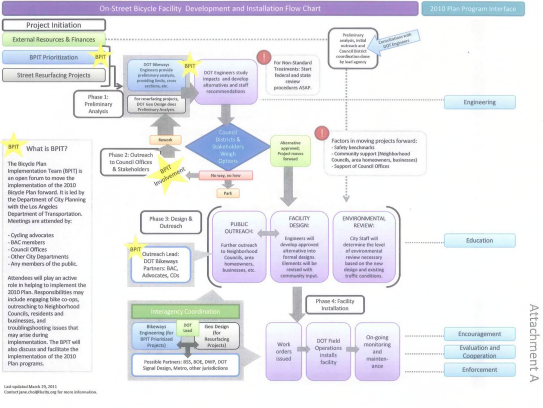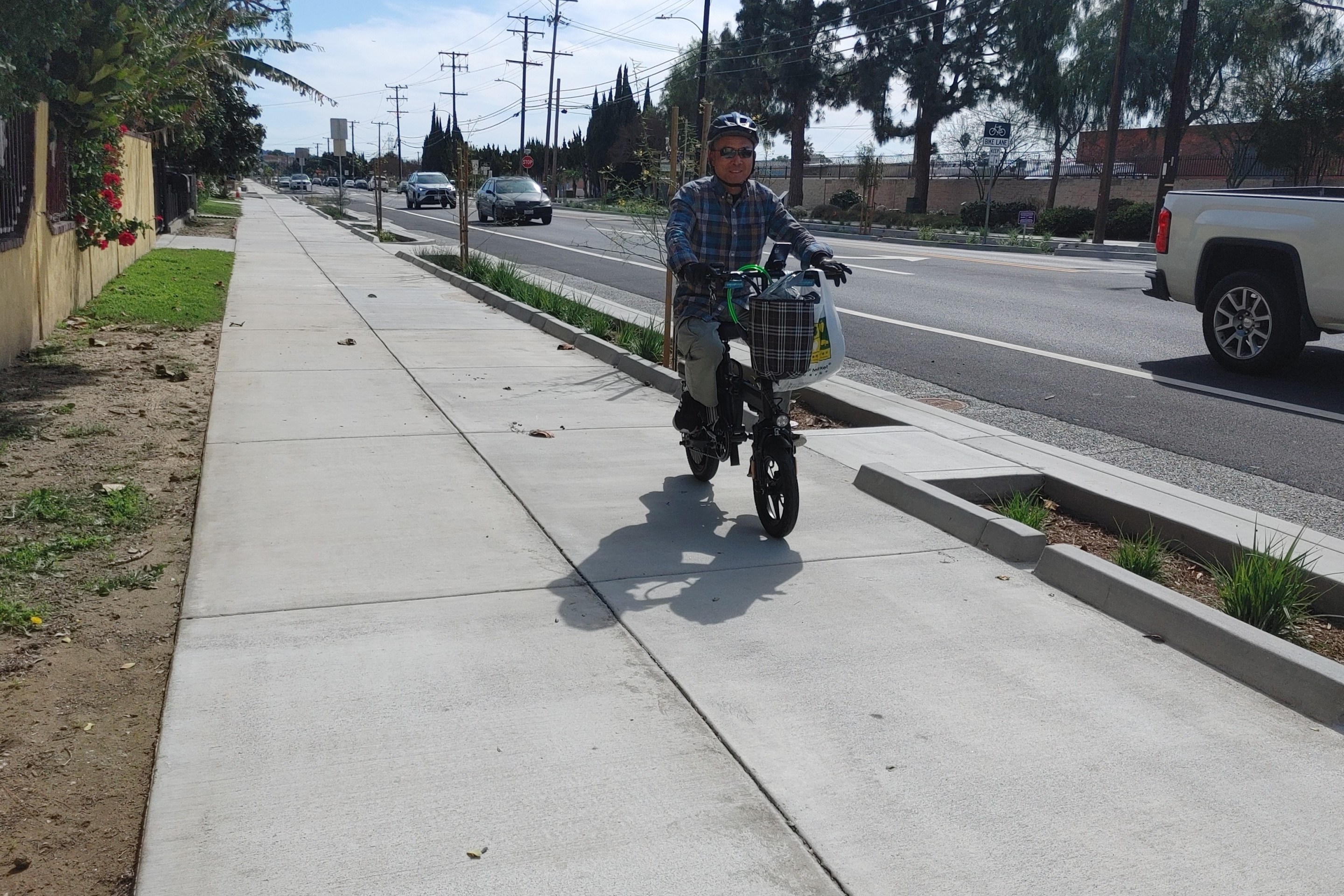
Yesterday, the LADOT and City Planning made their quarterly update to the City Council on the progress of the implementation of the Bike Plan. The Council's Transportation Committee also moved a motion that would transfer $475,000 to LADOT's overtime account. Between the somewhat confounding report offered by the agencies and the revelation that bike projects have to be built on overtime, it's no surprise that some advocates are anxious.
The funding motion addressed on Wednesday is a sort of good news/bad news motion. The motion allows the transfer of $475,000 from LADOT project accounts to overtime accounts so that LADOT can install new bike lanes and Sharrows. The good news is that these funds will see to the completion of eight bike lane projects totaling eight miles and nearly seventeen miles of Sharrowed Streets.
If implementation of these projects really does occur "in the next couple of weeks" it would be a great start for the city in the 2011 fiscal year. The Mayor famously promised 40 miles of new bike infrastructure a year last March at the Bike Plan signing, a promise which has gotten off to a somewhat rocky start. Knocking out 25 miles of that infrastructure in the first couple months of the year is a good sign.
But the "overtime" issue is a troubling one.
A couple of weeks ago I stood next to the Green Shared Lane in Long Beach talking with Long Beach's Mobility Coordinator, Charlie Gandy. I asked him how much it cost to paint a green lane on each side of a main drag through Downtown Los Angeles. His answer? "$5,000." When pressed, he admitted that he didn't know the labor costs, because "those are fixed costs with the city." In other words, painting bike infrastructure is just part of the job in Long Beach, and that saves the city hundreds of thousands of dollars in project costs.
As Bikeside Chris put it, " As LADOT continues to bill the City for overtime, scarce Measure R, Transportation Enhancements, Congestion Mitigation and Air Quality and Transportation Development Act bike improvement funds quickly become depleted." As the city over bills for bike projects now, it means less projects later.
The second major issue is that the LADOT and City Planning issued a report to update the Council on all the new bike plan projects underway and spent more time in the report talking about the public meetings they hold, open to the public but attended by insiders, known as the Bike Plan Implementation Meetings, which they just announced will be held quarterly rather than monthly.
But the update has drawn criticism more for what isn't in the document than what is.
"We would have liked to see some updates on how they're trying to fund the program. What Safe Routes to School grants did the city apply for? What about the Metro call for projects?" asked the Los Angeles County Bike Coalition's Alexis Lantz.
Bikeside's critique is quite a bit harsher, as they point out that nowhere in the update does it actually say when projects are going to be completed, how long the projects are, or how much they cost. If you poke around the Internet a little, you can find more answers on the LADOT Bike Program website. At least the documents on that website tell the reader how long the projects are.
So what should an update look like? Lantz suggests something akin to the quarterly updates of PlaNYC, which not only gives much more detailed project updates, but also discusses the challenges the Apple faces as it tries to move towards sustainability.
But as we wait to see if the City can interpret its Bike Plan updates for the City Council and for the public in general, the bigger question is whether the city is failing to live up to the Mayor's promise, or whether some shoddy updates are clouding a brighter picture.
We'll stay tuned.





